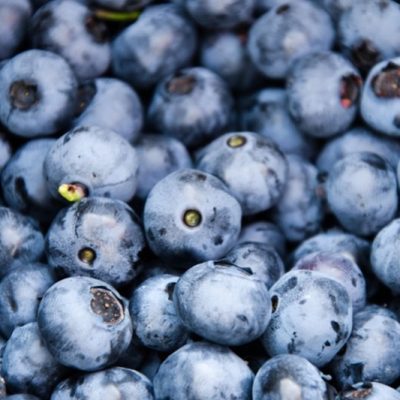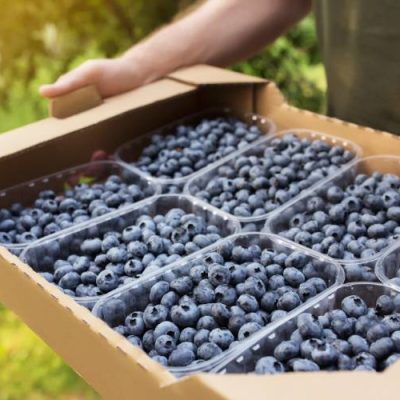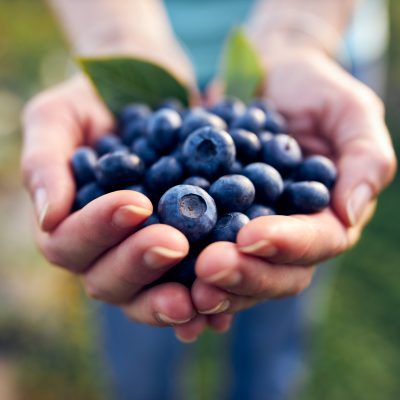The impact of climate stress on global blueberry cultivation
- . October 2025
The industry’s response is geared toward genetic innovation and climate-smart management. Leading breeding programs, such as Fall Creek, Sekoya, OZblu, Planasa, and with ongoing support from the University of Florida Institute of Food and Agricultural Sciences (UF/IFAS), have developed genetics with low chilling requirements and greater heat tolerance, capable of maintaining firmness, flavor, and size under stressful conditions.
Climate change has become one of the main factors that could define the future of the global blueberry industry. Alterations in temperature patterns, irregular rainfall, and the increasing frequency of extreme events, such as prolonged droughts, heat waves, and early frosts, are transforming production conditions in the world’s key producing regions.
This “climate stress” not only affects crop physiology, but also alters production geography, commercial planning, and the industry’s international competitiveness.
Physiological and productive impact
Blueberry is a species highly sensitive to thermal and water stress. Temperatures above 32°C cause size reduction of the fruit, softening y damage to the epidermis, while frosts in early stages of flowering can cause losses of between 15% and 40% of production. Water stress, especially in light and poorly drained soils, generates nutritional imbalances and a lower absorption of calcium and potassium, directly affecting post-harvest quality.
In regions like Chile, Peru and Morocco, the water shortage has forced producers to migrate towards more heat-tolerant varieties and adjust harvest schedules. Meanwhile, in temperate climate zones, such as United States, Canada, Poland and Germany, episodes of late frosts and heavy rains in spring have modified the phenological cycles, affecting flowering and fruit setting.
Geographical reconfiguration
Climate stress may accelerate a global relocation of production. Traditionally dominant countries, such as Chile and Spain, have experienced a relative loss of competitiveness due to droughts and energy costs associated with intensive irrigationIn contrast, emerging regions such as China, Southern Africa and Eastern Europe, They are expanding their surface area thanks to even more stable climates and technological investments in fertigation, shading and soil management.
En North America, the El Niño and La Niña phenomena have alternated years of excess water with periods of deficit, generating volatility in returns. In the case of Peru, the 2023-2024 season was one of the most challenging in a decade: the thermal impact reduced volumes by more than 40%, highlighting the need to develop varieties adapted to warm climates and high-altitude cultivation systems.
Adapting
The industry’s response is geared toward genetic innovation and climate-smart management. Major breeding programs, such as Fall Creek, Sekoya, OZblu, Planasa and with the permanent contribution of the University of Florida Institute of Food and Agricultural Sciences (UF/IFAS), have developed genetics with low cold requirements and greater heat tolerance, and capable of maintaining firmness, flavor and size under stress conditions.
At the agronomic level, the use of shade nets, humidity sensors, remote-controlled drip irrigation, and heat-stress biostimulants has become a widespread practice in arid regions. Likewise, the integration of Artificial Intelligence y satellite monitoring allows you to anticipate extreme conditions and adjust fertigation in real time.
El soil and microbiome management, along with the application of growth regulators, has also proven effective in reducing the effects of heat stress and excessive solar radiation, especially in export crops in Morocco, Mexico and South Africa.
Challenges and opportunities
The impact of climate change, while threatening the stability of the industry, also opens up opportunities for new producing regions and more sustainable cultivation models. Blueberries, due to their high profitability and added value, continue to attract investment to countries with water availability and complementary commercial opportunities.
However, the sustainability of the sector will depend on its ability to adapt without compromising quality or access to premium markets, where environmental and carbon footprint certifications are increasingly required. Cooperation between companies, research centers, and governments will be key to building global structural resilience in the next decade.
In short, climate stress has gone from being a one-off challenge to a determining and structural factor in the future of the blueberry industry. By 2030, the sector’s competitiveness will no longer depend solely on genetics or production costs, but on the technological adaptation capacity and climate management of each producing country.
10-22-2025
Source: BlueBerries Consulting







